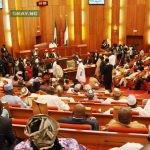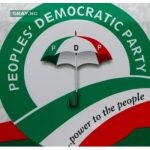The I&E Window, also known as the Nigerian Autonomous Foreign Exchange Market (NAFEX), is a special trading segment introduced by the Central Bank of Nigeria (CBN) in 2017 to enhance liquidity and facilitate the timely execution and settlement of eligible foreign exchange (FX) transactions.
This window aims to deepen the FX market and accommodate the FX obligations of investors, exporters, and end-users.
In this article, we will answer some frequently asked questions about the I&E Window/NAFEX and how it works.
What is the purpose of the I&E Window/NAFEX?
The primary goal of the I&E Window/NAFEX is to enhance liquidity in the Nigerian FX market. By providing a dedicated platform for investors, exporters, and end-users, the CBN aims to accommodate all FX obligations and ensure efficient price discovery based on prevailing market circumstances.
What are the eligible transactions in the I&E Window/NAFEX?
The I&E Window/NAFEX allows for various types of transactions, including:
- Invisible Transactions: This category covers a wide range of transactions such as loan repayments, dividends/income remittances, capital repatriation, consultancy fees, technology transfer agreements, personal home remittances, and other eligible invisible transactions outlined in the CBN Foreign Exchange Manual.
- Bills for Collection: Transactions related to bills for collection, which involve the collection of payments on behalf of customers, are also eligible to access the I&E Window/NAFEX.
- Trade-related Payment Obligations: Any other payment obligations arising from trade activities can be processed through the I&E Window/NAFEX at the customer’s discretion.
Who are the participants in the I&E Window/NAFEX?
The supply of foreign currency to the I&E Window/NAFEX is sourced from portfolio investors, exporters, Authorized Dealers (such as banks), and other parties with foreign currency holdings to exchange for Naira. The CBN also actively participates in this window as a major provider of liquidity and ensures professional market conduct. The supply of foreign currency to the I&E Window/NAFEX comes from different entities, including:
- Portfolio Investors: Investors engaged in the Nigerian market who possess foreign currency that they want to exchange for the Naira.
- Exporters: Businesses involved in export activities that have foreign currency earnings and wish to convert them into local currency.
- Authorized Dealers: These are CBN-licensed entities, such as banks, that act as intermediaries in FX transactions. They facilitate the buying and selling of foreign currency for their customers.
- CBN: The Central Bank of Nigeria participates in the I&E Window/NAFEX as a market participant to promote liquidity and ensure professional market conduct.
What are the I&E Window/NAFEX rates?
I&E Window/NAFEX rates are the exchange rates at which foreign currency trades are executed within the I&E Window/NAFEX. These rates are determined based on prevailing market circumstances and serve as benchmarks for transactions conducted in the I&E Window/NAFEX. The CBN publishes the weighted average rate of the I&E Window/NAFEX on its website.
What are the benefits of the I&E Window/NAFEX?
The I&E Window/NAFEX offers several benefits for the Nigerian economy and the FX market, such as:
- Improving FX liquidity and availability for investors, exporters, and end-users.
- Enhancing transparency and efficiency in FX price discovery and allocation.
- Reducing the gap between the official and parallel market rates.
- Boosting investor confidence and inflows into the Nigerian market.
- Supporting the diversification of the Nigerian economy and export promotion.
What are the challenges of the I&E Window/NAFEX?
The I&E Window/NAFEX also faces some challenges and limitations, such as:
- The volatility and uncertainty of the FX market due to external and internal factors.
- The dependence on oil revenues and foreign portfolio inflows as the main sources of FX supply.
- The regulatory and operational constraints of the CBN and the Authorized Dealers in managing the FX demand and supply.
- The lack of adequate data and information on the FX transactions and activities in the I&E Window/NAFEX.









